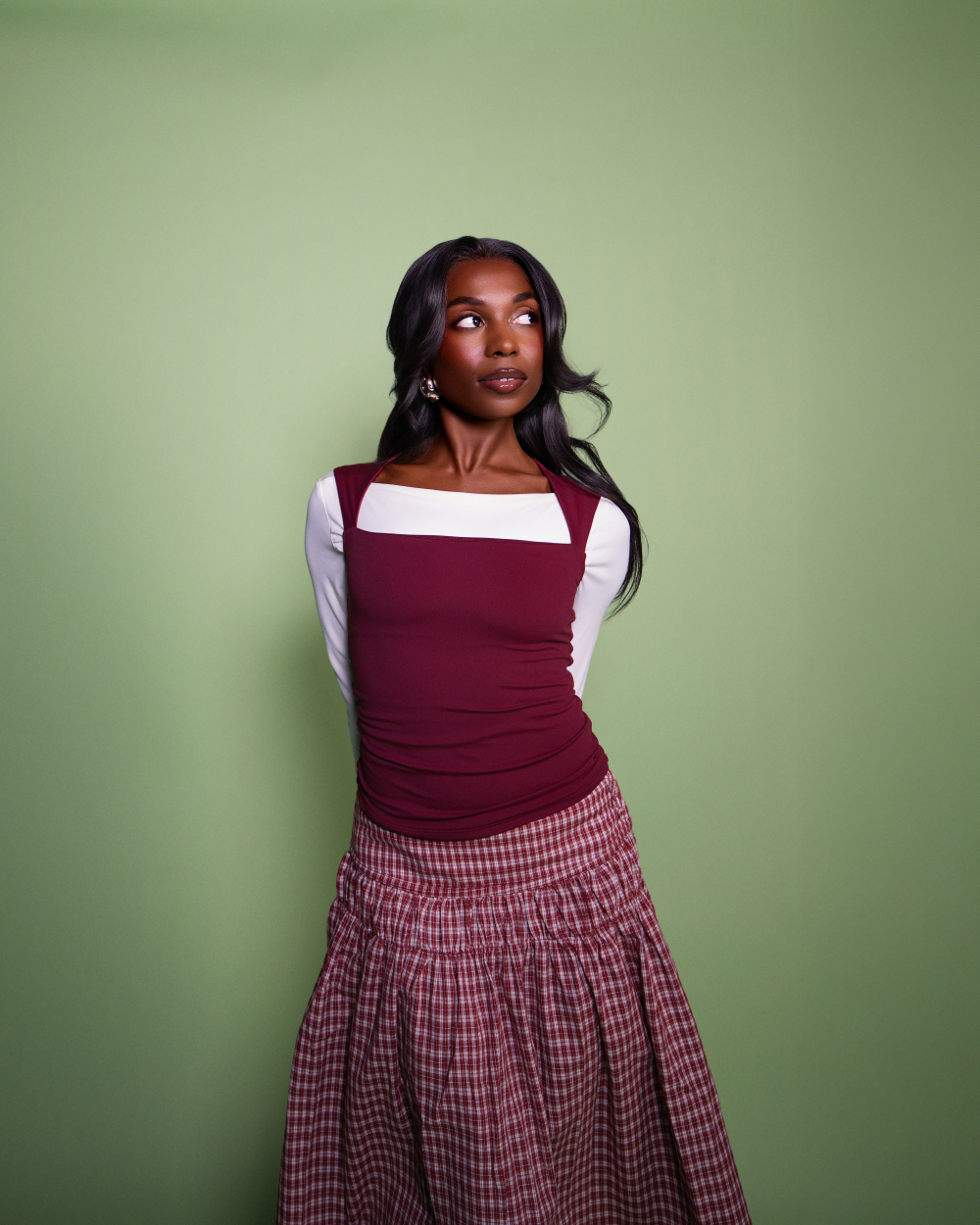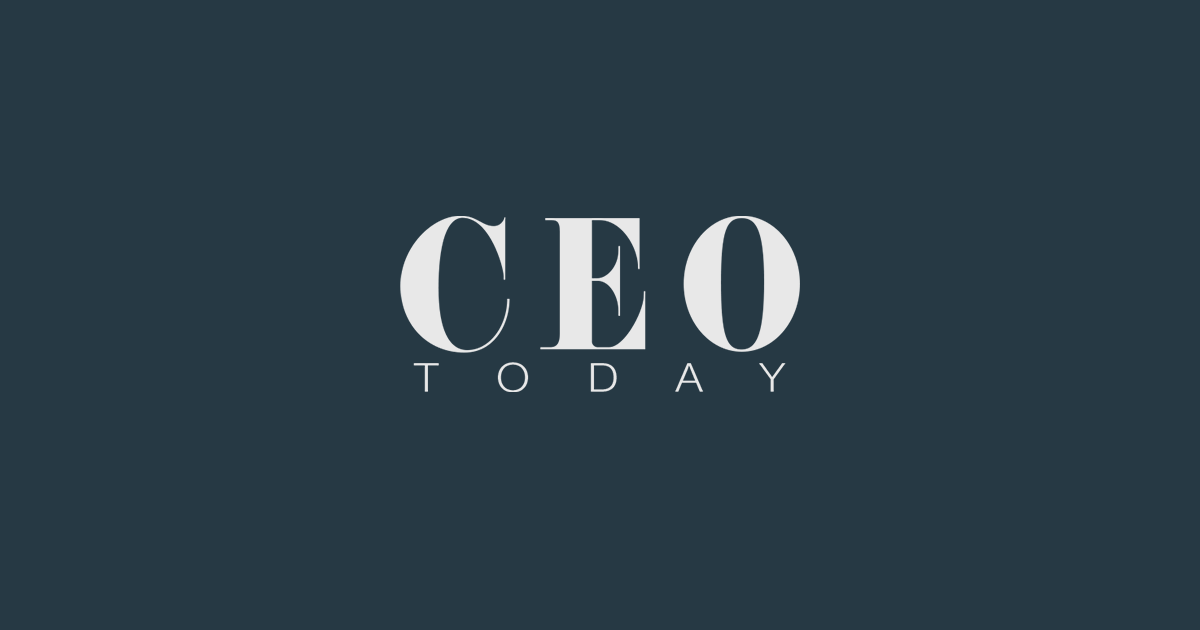In our exclusive conversation with Toni Bravo, beauty influencer and personality making her mark in the industry, Toni shares her journey and some exciting news about an upcoming launch.
Toni first got her start in the beauty industry at Rare Beauty, where she ran social media and supported creative projects. What began as playful TikTok videos with the makeup she brought home from work soon turned into a breakout platform that launched her career and positioned her as one of beauty’s most exciting new voices.
Toni built her audience by testing out blush shades on herself, often taking requests from followers a reflection of her commitment to her community and her willingness to consistently show up for them. In doing so, she filled a noticeable gap on social media for people with similar skin tones who struggled to find representation in beauty content. This focus not only set her apart but also led to collaborations with brands like Rhode and Tower 28 and opportunities to work alongside icons such as Pat McGrath and Patrick Ta. Her influence has since been recognized on a bigger stage, with Rolling Stone naming her one of 2024’s 25 Most Influential Creators and Forbes including her in its 2025 30 Under 30 list for social media.
In this interview, Toni shares her journey from behind-the-scenes roles to front-and-center influence, her hopes for the impact she can make through her platform, and what’s next for her growing career.
Toni Bravo by Grace Bukunmi
You start your career behind the scenes at Rare Beauty. How did that experience influence your decision to branch out and build your own social media presence?
Rare Beauty gave me my first stint in the corporate beauty world as an adult which allowed me to start my journey in beauty and explore an industry I had been interested throughout my whole adolescence. I was in that 2016 make-up era, watching the gurus on YouTube, getting palettes and just playing with make up at that time. I had a few years where I stepped back from this as a hobby but Rare helped me love it again. When I left Rare, I felt like I had learned what I needed to execute my own vision and create my own personal brand on social media. I had to choose between my role at Rare and my content because my platforms were doing well enough that it wasn’t just a side project anymore.
At what point did you realize that content creation could evolve from a passion project into a full-time career?
There were a few moments, it was an internal feeling when I realized that I could be consistent with it and I had such a willingness to show up for it. You could base your content off public perception, but you can’t control that, but I can control my own consistency. I figured that If I could be posting every day when I had a 9-5 and it doesn’t feel draining then there was definitely something there.
In the early days, how did you focus on building a loyal audience—balancing their requests and interests with your own vision for growing your platform?
I started by posting roller blading videos and people followed me for that and then my fashion content came more of a focus too, but I wasn’t talking to the camera at that point. As people became familiar faces on my page, I started engaging with them directly remembering names, responding to comments and it created an intimate connection that allowed me to truly get to know my audience. When my pages grew it was because of short form content which is being pushed out, and you get to almost audition for the audience each time. You don’t need to consciously think about building a new audience as long as you are already giving back to your current one. It was never about trying to gain more it was about paying attention to who was already there and that organically made people want to be a part of something.
When you reflect on your platform today, what do you see as its core purpose, and what values do you hope it represents?
I get a lot of kind messages from people who are impressed that I’ve managed to pivot from niche to niche. That’s never been on purpose, I’m just doing what I really want to do and genuinely love in the moment, so I don’t ever feel pigeonholed. That makes it easier to do anything, in a world where you get to pick and choose. So, I would hope my impact is making people realize that you can fully do whatever it is you want as long as you are open. People have followed me through different chapters first at Buzzfeed, then during my roller-skating content, and now in the beauty space. They’ve seen me in all these different versions of myself, and I hope it’s a reminder that you’re allowed to evolve, to shift, and to explore new sides of who you are. I think the central theme of my content journey—and what I hope comes across is that I’m simply being myself and creating around the things I genuinely love.
If you had to choose, which platform do you enjoy creating content for the most, and why?
That’s a tough one. I’ll always have a soft spot for short-form content it’s so central to the way we create now, and I think you have to embrace it. But lately, I’ve really been drawn to slower platforms like YouTube and Substack. They demand more time and energy, which makes the outcome feel more meaningful. Plus, the audience on YouTube is incredibly loyal. If someone’s willing to sit through a 20-minute video of you every week, that speaks volumes about the sense of community it builds.
As your influence grew, when did you recognize the need to build a team to support your personal brand?
When I started it was just for fun, and it picked up without me realizing and I just had to act on it at the time. Very early on, I realized that if I was spending more energy on campaign negotiations and emails than on actually creating, I was losing the whole reason I started. Within about four to six months of posting organically, it became clear I couldn’t manage every aspect alone.
Having a manager and an agency to advocate for me has been invaluable. For a while, I even brought on a video editor, but that experience made me realize how much I personally love editing—so I took that role back. What I’ve learned is that your setup doesn’t have to be fixed. You can always adjust roles and responsibilities so the balance works for you.

Toni Bravo by Grace Bukunmi
How do you decide which brand partnerships and campaigns to pursue, and what steps do you take to ensure your team represents your vision accurately?
If a campaign doesn’t feel like me or match what my brand is about, then it’s just not worth taking on. When you’re putting a team together, I think it’s super important to already know your vision and how you want your brand to show up, so you can clearly share that with your manager. A good manager will get to know you well enough to know right away if something feels on brand or not.
For me, it always comes down to authenticity. I only say yes to products I actually use, love, or would naturally bring into my life even if there wasn’t a campaign attached. I always ask myself: Would I still use this if it wasn’t paid? If the answer is yes, then I know it’s the right move.
Being named to Forbes 30 Under 30 in 2025 is a huge achievement. What did that recognition mean to you personally and professionally?
It was such a shock in the best possible way! I’d been doing this for a year and a half so to have that level of recognition from an outside perspective was amazing. I always feel proud of myself and grateful because I’m supported in my community, but this was really affirming to be there with my peers and content creators I love. It helps you get a bird’s eye view of your impact which isn’t an everyday situation.
Were there particular creators who inspired you when you were starting out, and who do you find most inspiring now?
When I first started, I was honestly just winging it. I hadn’t really been watching a lot of short-form beauty content, and I’d even taken a break from my own social media before creating again so I didn’t totally know what I was walking into. I’ve always admired creators who inspire and set the bar, but I also love the idea of growing alongside your audience. That’s why I’m so grateful for the friendships and connections I’ve made through this job.
My first blush video is a perfect example I didn’t even know what hashtags to use. I just wanted to find someone online with a similar skin tone who had tried the same product, and when I couldn’t, I thought, Okay, I’ll make this video myself. That’s how it all started. Suddenly I was in this world of short-form beauty content where you have to grab attention in two seconds flat.
Growing up, I was watching people like Jackie Aina on YouTube, so to now be part of the same space as someone who really paved the way for creators who look like me feels so full-circle. Honestly, ignorance was bliss at the beginning I just jumped in without overthinking it, which worked out because if I had studied the space too closely, I might have psyched myself out. When that blush video blew up, I leaned into it testing and reviewing products, by request from my audience. It became this really cool exchange: I was learning from them while also giving back something they weren’t finding elsewhere, especially for my skin tone. That’s what motivates me to keep showing up.
You have a fragrance launch coming up on October 8. Can you walk us through the creative process and the work that went into developing this product?
I’m such a fragrance girl—I love layering scents and experimenting with new ones. Around this time last year, we started with just a few samples, figuring out what felt most me. The process kicked off with a mood board built around my favorite movies, places, and even certain feelings I wanted to capture. I’ve always gravitated toward vanilla with a soft skin musk—something cozy with a touch of saltiness, but not overwhelming. As I described these little details, the lab team kept refining the formula, and each new sample just got better. What I wanted was a fragrance that felt familiar—like a hug, a memory, or a person you love. That’s what this scent became.
Fragrance creation is such a different process compared to makeup. With blush, you see the result instantly, but with perfume, it’s about how it wears throughout the day. That slower pace really let me connect with the scent on a deeper level. I even tested it on friends and family, asking them to wear it for a full day because fragrance changes with your body chemistry—kind of like color theory, where everyone experiences it differently.
When LMG reached out, I was already a fan of their fragrances, so the chance to create my own with them felt surreal. We flew to New York, spent time in the lab, and built something I’m so proud of. I can’t wait for everyone to experience it when it launches on October 8th.
Related: CEO Today Interviews Monica Ravichandran: Color Theory, Truth, and Beauty Innovation
Related: An Exclusive Interview with Marvella: From Creator to CEO of Marviano Cosmetics
Related: An interview with Vladislava Samoilenko


